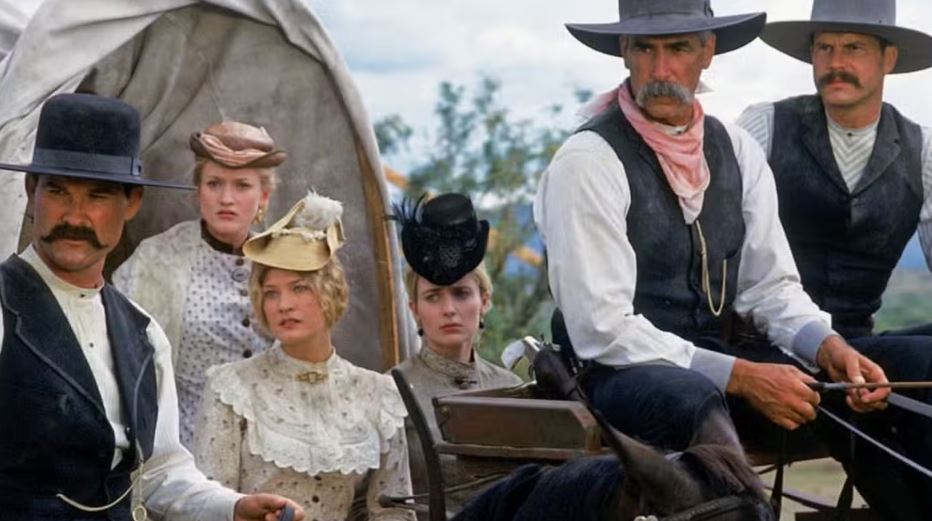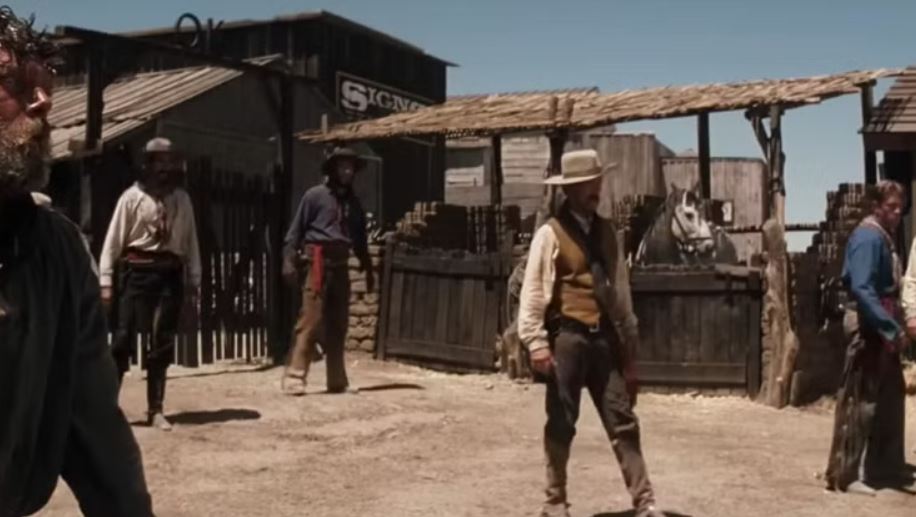Whenever the 1993 Western movie Tombstone is mentioned, many iconic moments come to mind. Among them are the late Val Kilmer’s ghostly Doc Holliday, Kurt Russell’s fiery and fierce Wyatt Earp, and the best impression of the violent dust-up at the O.K. Corral. They may not be the most accurate depictions of the real-life events they are based on, but they sure are the most believable and the closest we’ve seen yet to the myth at the center of the film’s plot. Tombstone also scores another one in a historically accurate touch that is neither in its gunfights nor dialogue. It’s an accurate detail that is right under its actors’ noses — literally. We know the film for its grit and authenticity, but within that legacy, there is another natural and less discussed fact. That is that Tombstone’s mustaches are the real deal.
Rather than faking it with glued-on hairpieces like most period movies would, Tombstone’s screenwriter Kevin Jarre (who was initially destined to direct the film before he was fired) insisted that the cast grow their own, and they did. The thick and unruly mustaches you see worn by Kurt Russell, Val Kilmer, Sam Elliott, Bill Paxton, and every other actor in Tombstone except one may be the kind of commitment that slips past casual viewers, but they build the feeling that the movie’s frontier world was lived-in rather than designed. It’s a small touch that resulted in a huge payoff. The mustaches become period characters in themselves, taking us back into 19th-century frontier America.

Why ‘Tombstone’s Cast’s Real Mustaches Matter More Than You Think
Other than just looking right with the mustaches, Tombstone feels right as well because of this authentic detail. In the 1880s America, the right mustache could define a man in a town like Tombstone where mustaches were more than a style. They were status symbols, signs of toughness, and self-images all rolled into one. A mustache was an individual’s résumé. Tombstone’s actors growing their own mustaches meant living with the reality of physically carrying a piece of their characters even before filming a single scene of the iconic film. In so doing, even without putting in any other effort, the cast already brought with them something authentically special.
But every movie production has its hiccup or two. For Tombstone, it’s that one actor, Jon Tenney, who played the slippery Sheriff Behan, couldn’t grow his mustache fast enough and had to wear a fake one. Rewatching the film with hindsight, it’s hard not to spot the difference, as Behan’s mustache doesn’t quite move with the same looseness as the others. It’s a funny footnote in a production hailed for its obsession with getting the little things right. While it may seem like a vanity detail, it’s a commitment to immersion that ties into the film’s overall realism.
How ‘Tombstone’s Small Details Build Its Lasting Legacy

Mustaches aren’t the only reason Tombstone holds up as one of the great Westerns, but they’re part of a pattern that makes the movie feel richer with each rewatch. In the infamous O.K. Corral shootout scene, for instance, Tombstone surprisingly takes creative liberties that are in tune with the fight’s cultural phenomenon and, in turn, the audience’s expectation of it. The film’s portrayal of Val Kilmer’s Doc Holliday is another example that sets it apart. Holliday is a man dying slowly of tuberculosis rather than an invincible gunfighter, which deeply humanizes him. The historically accurate period costumes the cast wore were also another addition to the film’s detail that enhances its legacy. Add the decision to have its cast grow their own mustaches, and we get a film that still feels raw and immediate.
While it might seem silly to focus on mustaches when Tombstone gave us larger-than-life shootouts, moral dilemmas, and grand speeches, it’s these details that we barely notice that pull us in. Kevin Jarre’s insistence on real facial hair gave the film an organic quality that even audiences who didn’t know the behind-the-scenes story could feel instinctively. Perhaps more than anything, Tombstone is proof that great storytelling is the sum of a thousand tiny truths. In its case, there’s the sweep of a mustache all the way to the rattle of a dying man’s cough. Weaved together with its gunfights and memorable one-liners, they breathe life into the myth.